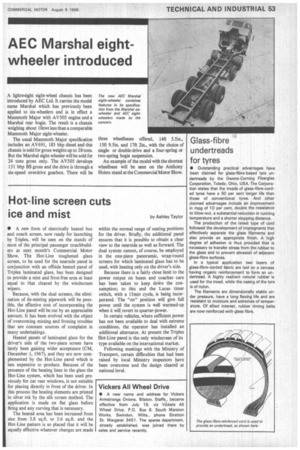Glass-fibre undertreads for tyres
Page 55

If you've noticed an error in this article please click here to report it so we can fix it.
• Outstanding practical advantages have been claimed for glass-fibre-based tyre undertreads by the Owens-Corning Fiberglas Corporation, Toledo, Ohio, USA. The Corporation states that the treads of glass-fibre-corded tyres have a 50 per cent longer life than those of conventional tyres. And other claimed advantages include an improvement in mpg of 10 per cent, double the resistance to blow-out, a substantial reduction in running temperature and a shorter stopping distance.
The production of the latest type of cord followed the development of impregnants that effectively separate the glass filaments and also provide an appropriate finish. A high degree of adhesion is thus provided that is necessary to transfer stress from the rubber to the glass and to prevent abrasion of adjacent glass-fibre surfaces.
In a typical application two layers of glass-fibre-corded fabric are laid on a carcass having organic reinforcement to form an undertread. A highly resilient natural rubber is used for the tread, while the casing of the tyre is of nylon.
The filaments are dimensionally stable under pressure, have a long flexing life and are resistant to moisture and extremes of temperature. Of allied interest, rubber timing belts are now reinforced with glass fibre.
















































































































































